With mobile commerce sales estimated at $3.56 trillion in 2021, ecommerce store owners can no longer afford to neglect the importance of having a mobile-optimized online store to attract customers and grow their business.
That begins with understanding how consumers these days are using their mobile devices. So before you get started on making changes to your store, you’ll want to read on for the latest and most relevant facts and figures that will guide your strategy.
In this article, we’ll provide you with important mobile statistics on key aspects of mobile usage such as the number of people who own smartphones, digital ad spend on mobile devices, and more.
To get even more ideas about how to use mobile commerce, check out our mobile commerce guide today.
If you’re ready, let’s get straight to it!
Post Contents
- 1. How Many People Own Smartphones?
- 2. Time Spent on Mobile Devices
- 3. People Using Phones for Product Research
- 4. Mobile Shopping
- 5. The Option of Mobile Shopping
- 6. Mobile Device Statistics: Traffic
- 7. Mobile Time Spent With Digital Media
- 8. Digital Ad Spend on Mobile
- 9. Mobile Retail Conversion Rate
- 10. Voice Search on Mobile
- Conclusion
- Summary: Mobile Usage Statistics
- Want to Learn More?



1. How Many People Own Smartphones?
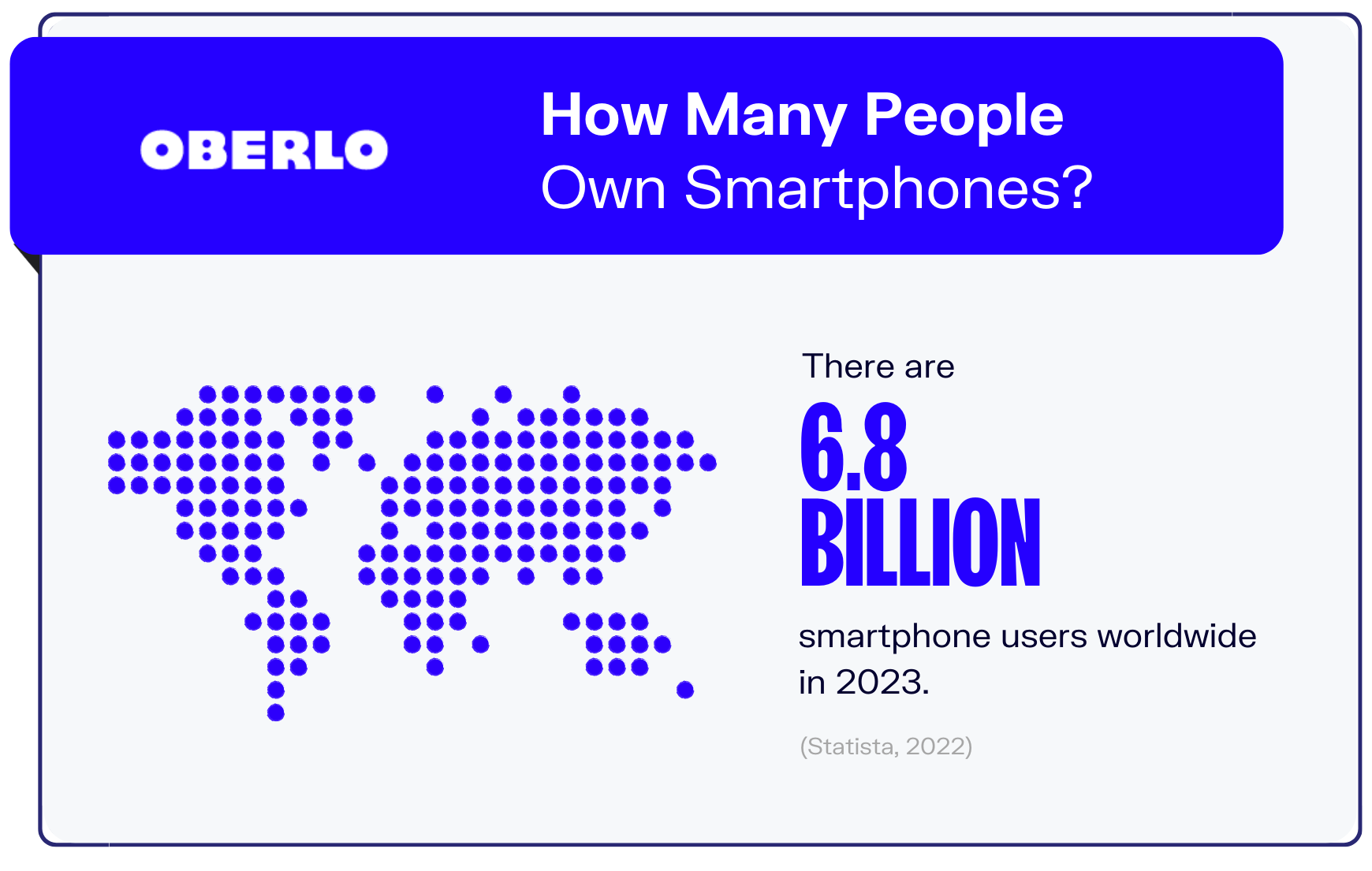
When talking about mobile usage statistics, one thing we absolutely cannot ignore is the dominance of smartphones.
→ Click Here to Launch Your Online Business with Shopify
There are currently 6.8 billion smartphone users worldwide (Statista, 2022). Considering the global population is at 8 billion, that means a smartphone penetration of over 80 percent.
The number of smartphone users is also rising rapidly over time, evidenced by the fact that as recently as in 2016, there were 3.7 billion smartphone users. In other words, the number of smartphone users has increased by a whopping 86.5 percent in just seven years.
Smartphone usage is expected to continue to increase in the coming years, breaching seven billion in 2024 before rising further to 7.5 billion by 2026.
As the most populous country in the world, it should come as no surprise that China is home to the majority of these smartphone users. There are over 910 million smartphone users there, ahead of second-placed India, with around 650 million. The country with the third-highest number of smartphone users is the United States with 249 million users.
2. Time Spent on Mobile Devices
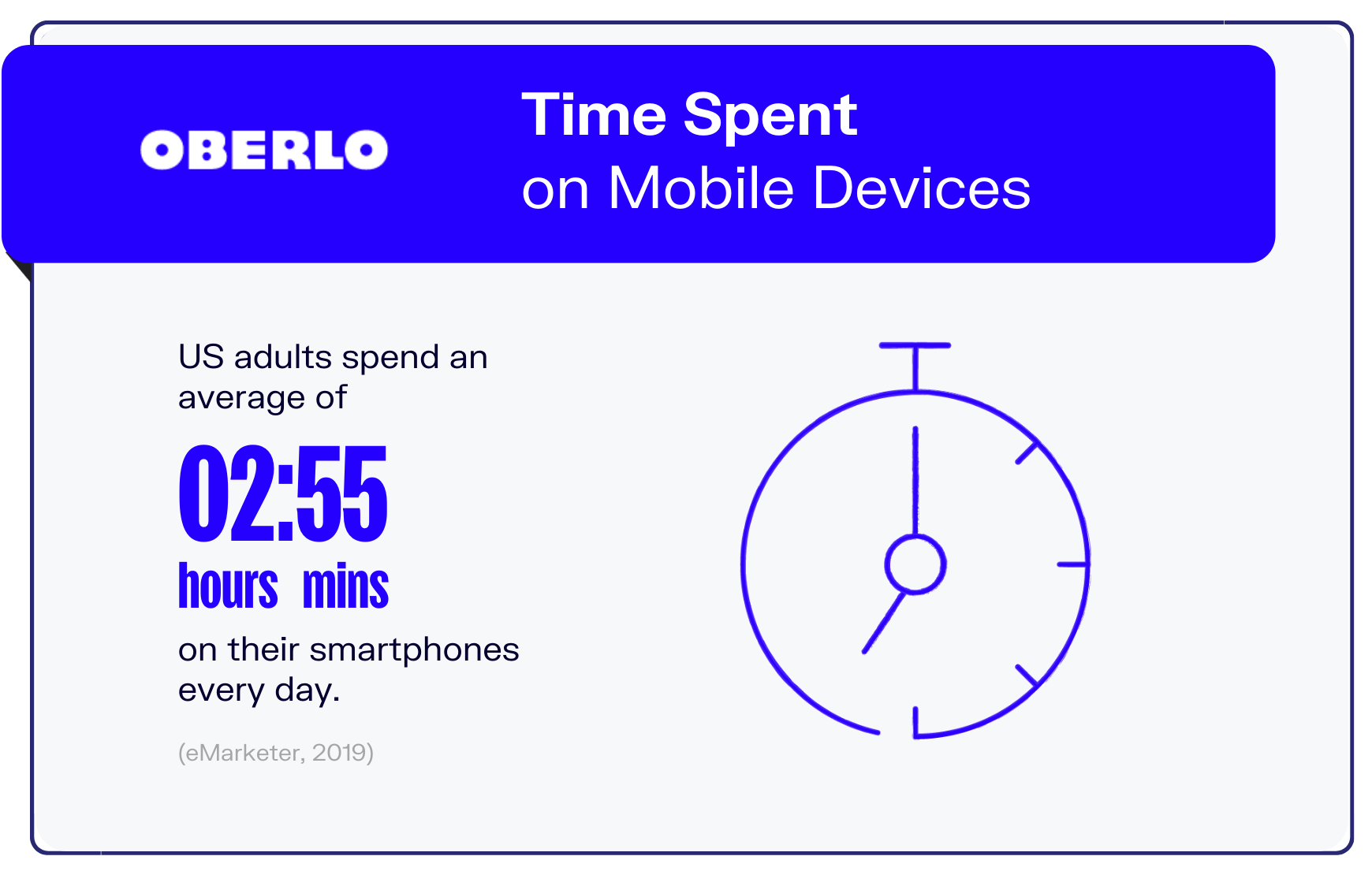
Now that we have an idea of how many people own smartphones, the next thing you need to know is how much time is spent using them.
In 2019, the average US adult spent 3 hours and 43 minutes a day on mobile devices. That marked the first time that the time spent on mobile exceeded the time spent watching television, which came in at 3 hours and 35 minutes.
This divide widened in the following years, with time spent on mobile devices estimated at just under four hours (3 hours and 54 minutes) in 2021, compared to 3 hours and 22 minutes of television time.
Zooming in on that statistic a little on smartphones, we see that US adults engage with their smartphones for an average of 2 hours and 55 minutes on a daily basis in 2019 – nine minutes more than the previous year (eMarketer, 2019).
3. People Using Phones for Product Research
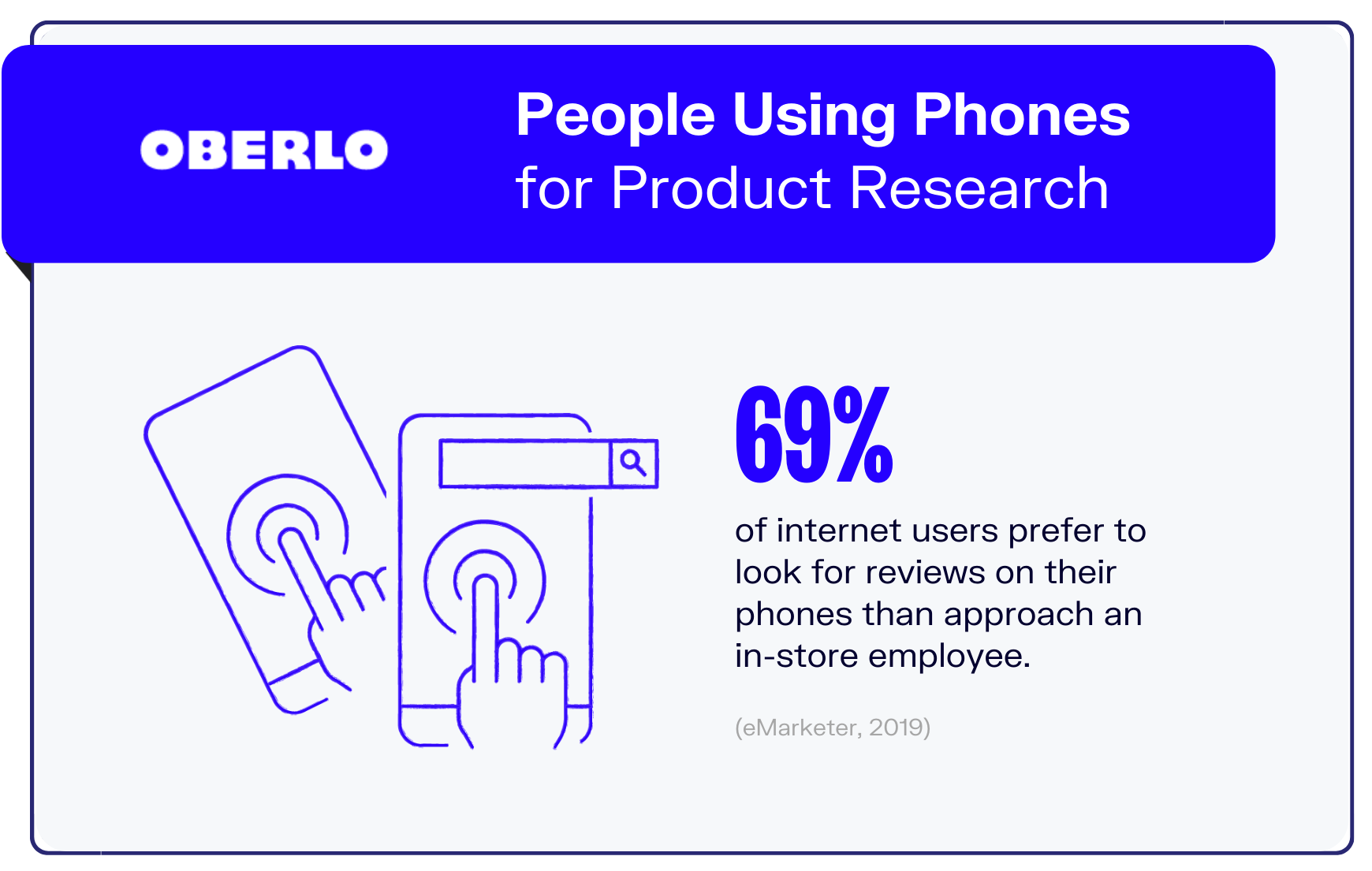
This next mobile statistic will show you how mobile devices influence consumers’ product research process. As the world gets increasingly digital, information has become widely and easily accessible online and consumer habits are also adapting accordingly.
The latest mobile usage statistics show that nearly seven out of ten internet users in the US say they would look for customer reviews on their phones while in-store before approaching an employee (eMarketer, 2019).
And researching product reviews isn’t the only thing mobile users are doing in-store. 58 percent of them are also looking for other products similar to the ones they’re thinking about purchasing, and 55 percent are looking up product specifications.
Such mobile usage statistics highlight the importance of providing consumers with a positive mobile experience, and retailers certainly are aware: half of them have already included it among their most important customer engagement strategies.
4. Mobile Shopping
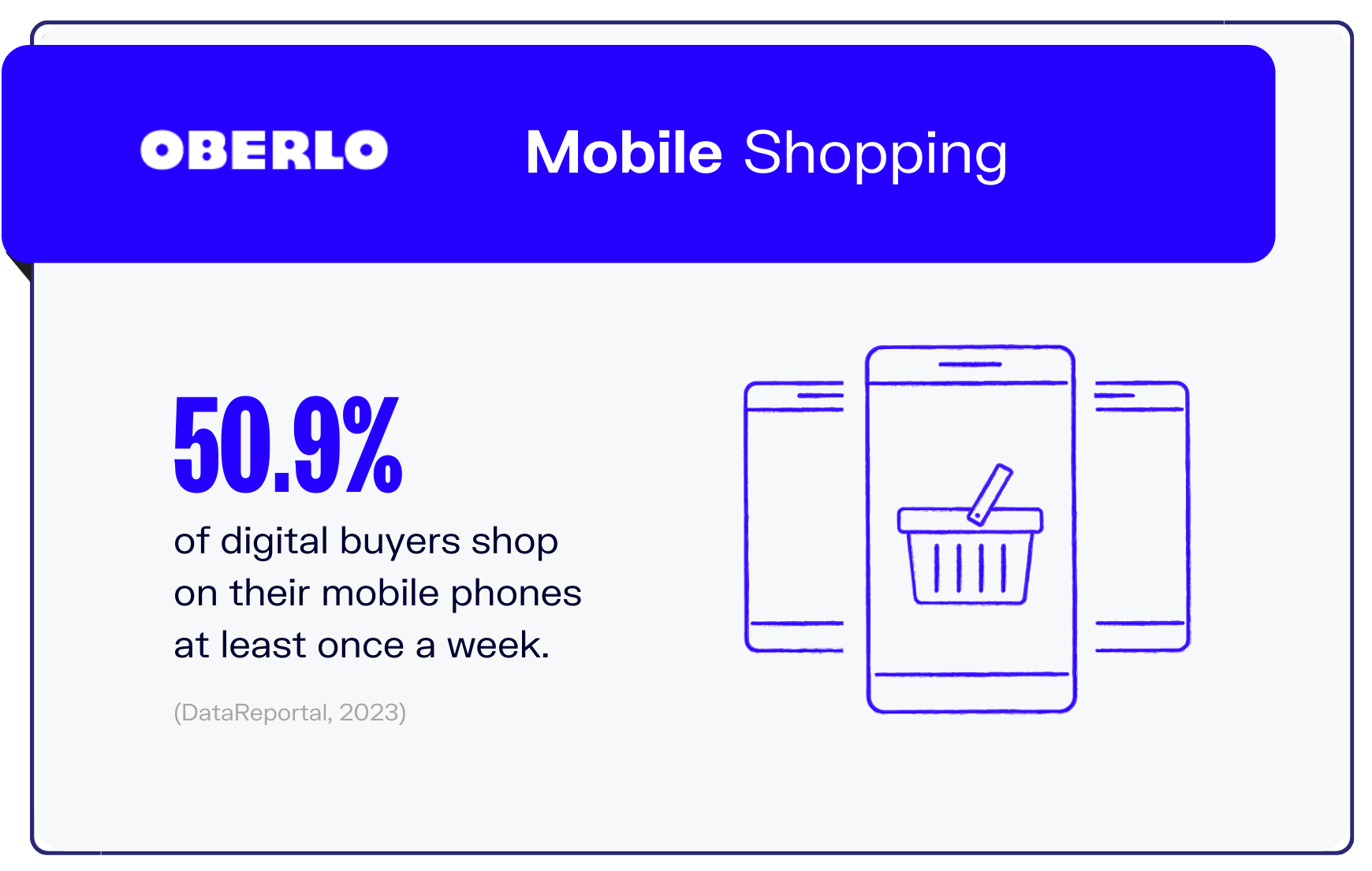
Not only are people using their mobile devices to do product research, but many of them are also using them to carry out purchases.
The latest mobile statistics hint at a high reliance on online shopping on mobile devices. More than half (50.9 percent) of online shoppers worldwide currently use their mobile phones to purchase products online at least once a week (DataReportal, 2023).
Of all the internet users worldwide, females aged between 35 and 44 shop on their mobiles the most, with 56.8 percent of them saying they’ve purchased a product online with their mobile devices in the past week. Likewise, males in the same age range carry out mobile commerce the most, at 52.4 percent. In comparison, just 46.6 percent of male internet users between 16 and 24 do so.
With so many people doing mobile shopping, as an ecommerce business owner, you should consider prioritizing your mobile optimization strategy. This is especially since users who have come across a negative experience on a mobile website are a lot less likely to continue buying from that business in the future.
5. The Option of Mobile Shopping

Given the ease and commodity of online shopping and the widespread use of mobile devices by consumers, many shoppers consider the lack of the option of mobile shopping to be a dealbreaker.
So if you’re still not convinced of the benefits of setting up your ecommerce store for mobile commerce, consider this statistic: Almost six out of every ten shoppers say that being able to purchase products on mobile devices is a key factor when it comes to choosing brands or retailers to buy from (Google, 2019).
As you work on your online store, focus on the mobile shopping aspect of it. It is important to make sure that the mobile shopping experience for your consumers is a seamless one.
That means everything from optimizing your store elements (i.e. images, layout, call-to-action buttons, etc.) for an optimal mobile experience and ensuring short load times to offering a smooth checkout process and allowing multiple payment options.
6. Mobile Device Statistics: Traffic
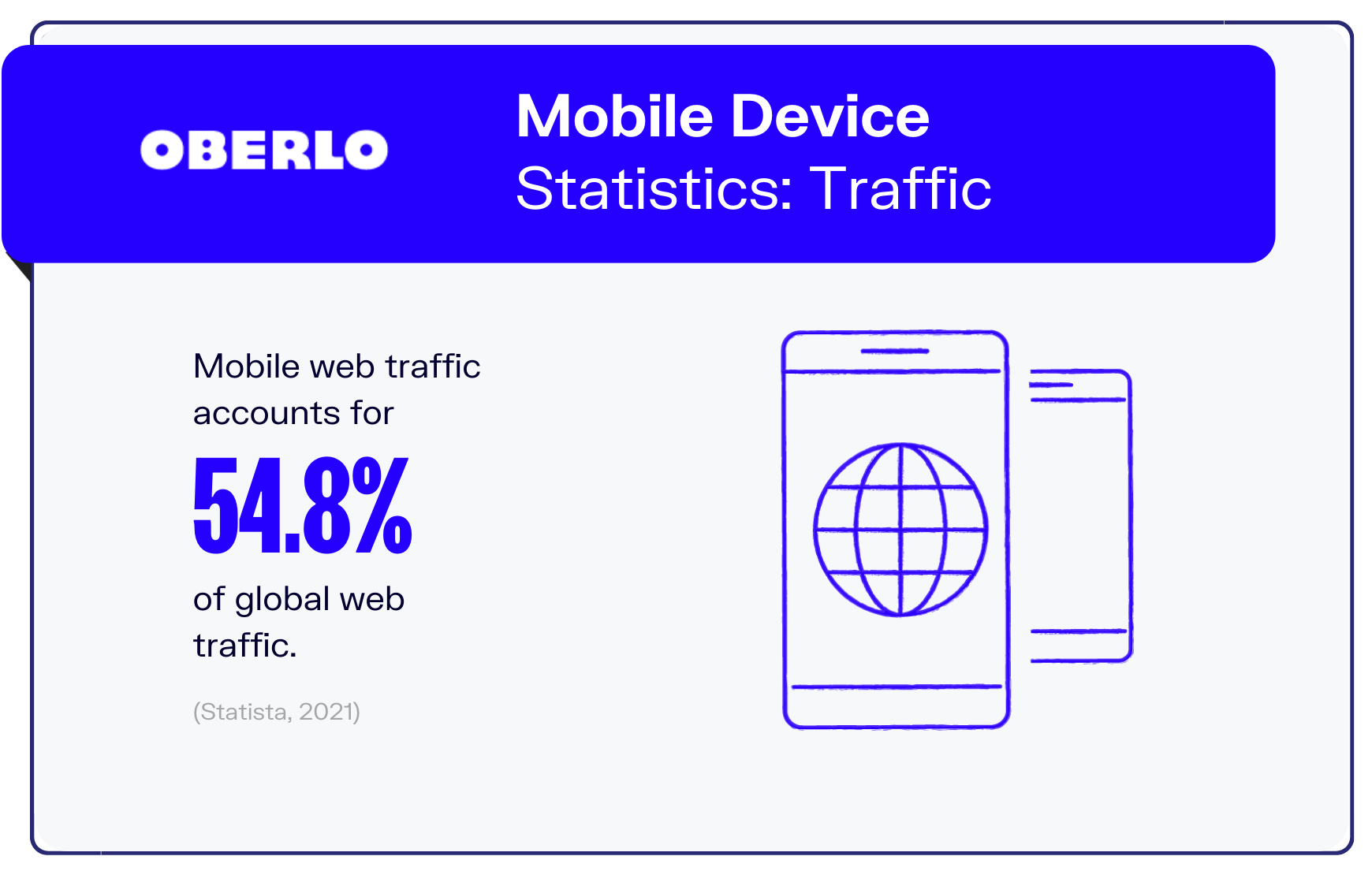
Here’s another statistic to highlight the growing popularity of mobile usage and it revolves around the increasing share of website traffic from mobile devices.
At the start of 2015, less than one-third (31.16 percent) of the global web traffic came from mobile devices. Fast forward to just six years later to the start of 2021 and that number has skyrocketed to 54.8 percent, marking a 75.9 percent jump (Statista, 2021).
In fact, since the third quarter of 2019, mobile traffic has consistently accounted for more than half of the total website traffic worldwide.
And with the emergence of 5G technology, which will bring about much quicker internet speeds and connections, we can expect mobile traffic to continue growing. In line with that, experts are expecting the average smartphone data usage to increase from 10GB (at the end of 2020) to 35GB by 2026.
7. Mobile Time Spent With Digital Media
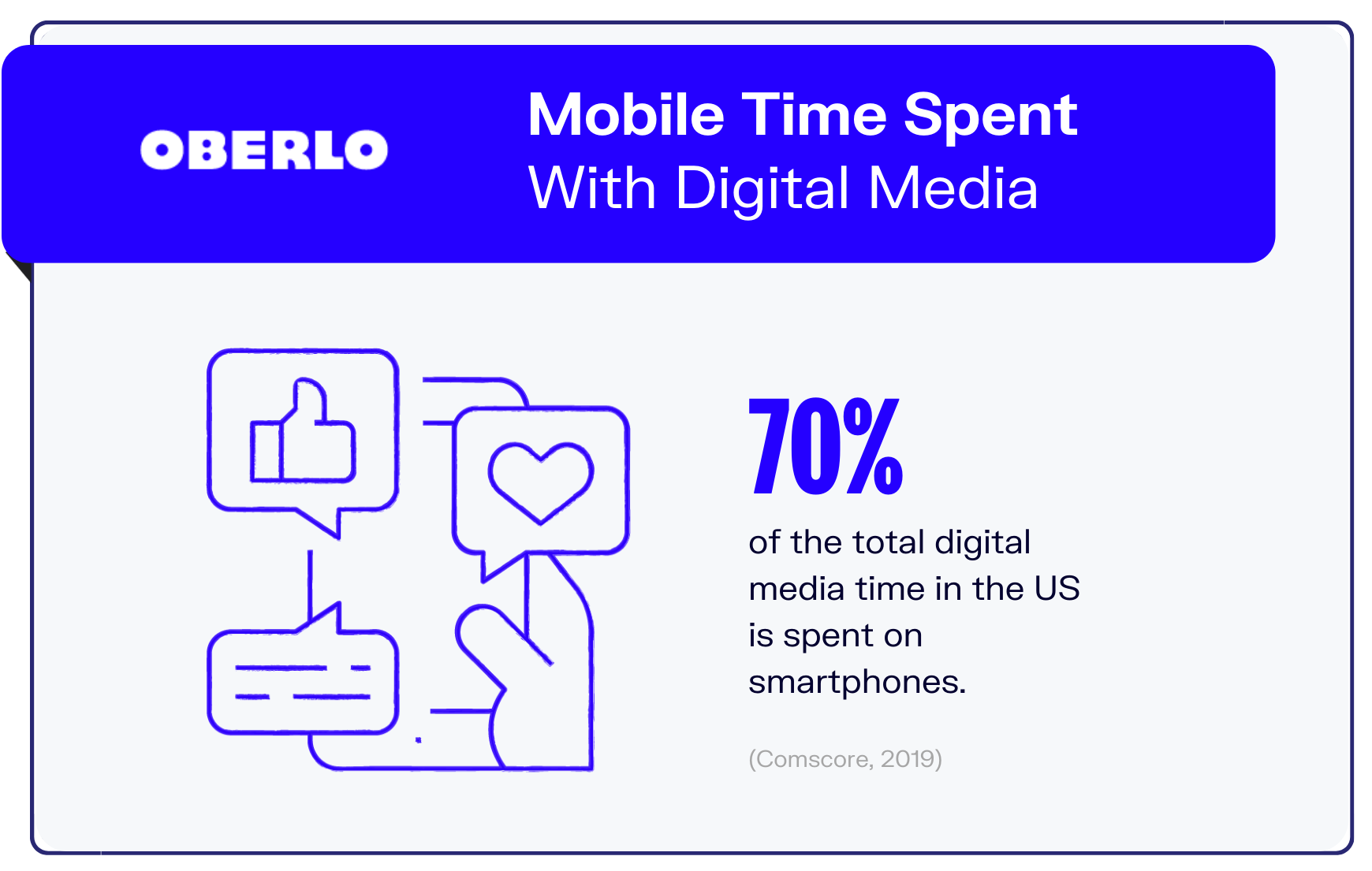
With the above mobile usage statistics, we have established that many consumers are spending a significant amount of their internet time with mobile devices. In this statistic, we’ll break down the mediums through which they’re consuming digital media.
Smartphones currently account for 70 percent of the total digital media time in the US (Comscore, 2019). That’s a 22.8 percent increase from the 57 percent registered in 2017.
Of total time spent consuming digital media on smartphones, we see a stark difference between time spent on the mobile web and on apps. While the former has stayed the same at seven percent from 2017, US consumers are now spending 63 percent of their time on digital media via smartphone apps, up from 50 percent in 2017.
It’s clear from these mobile statistics that smartphones are the most popular devices with which internet users consume digital media. Just 23 percent of US consumers’ time spent with digital media is done on the desktop, and that figure falls to seven percent for tablets.
8. Digital Ad Spend on Mobile
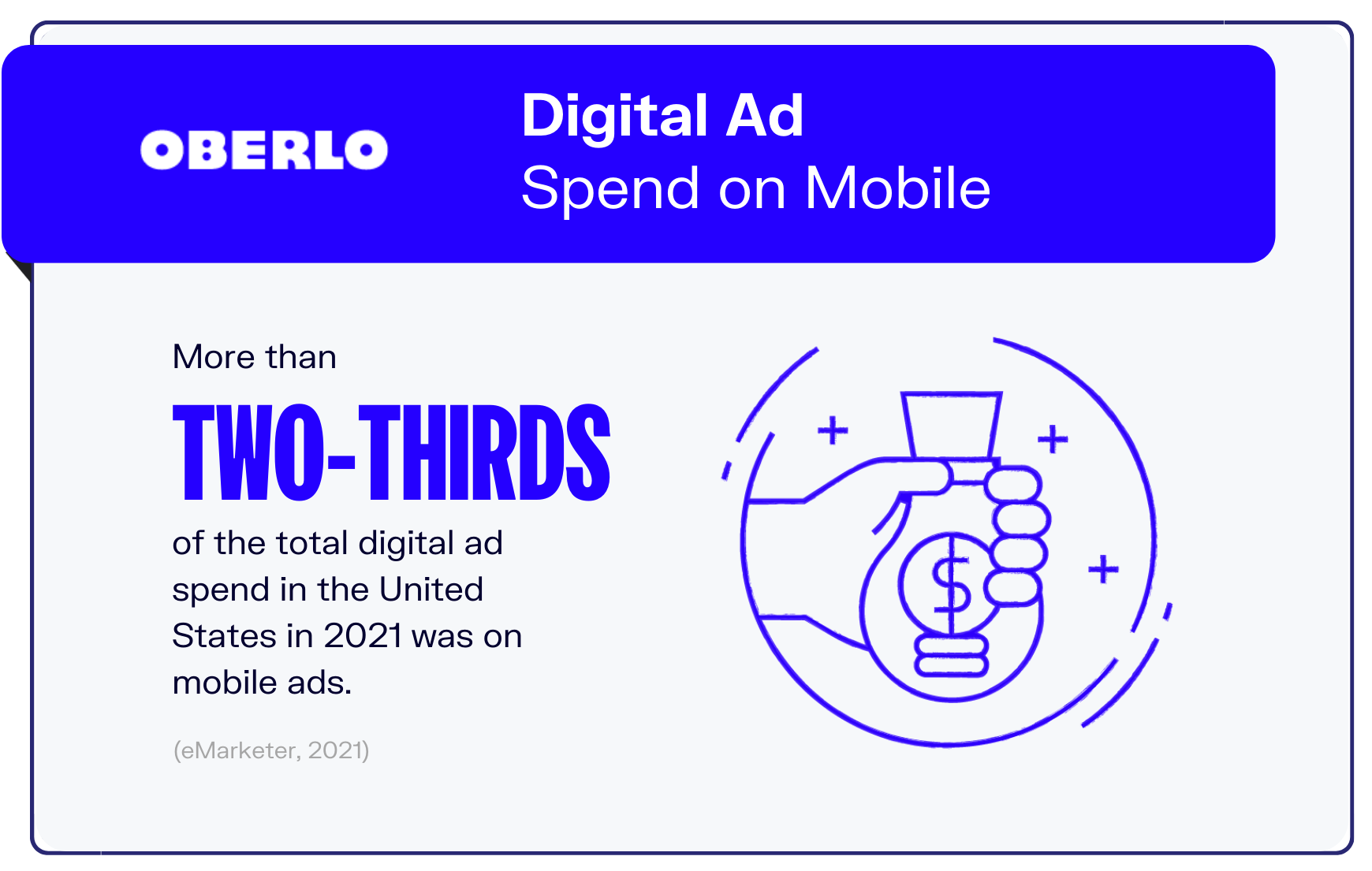
With the increasing amount of time spent on mobile devices, it’s no wonder that advertisers are spending more and more money on digital ads to reach consumers. This is so much so that expenditure on digital ads exceeded that of traditional ads for the first time in 2019.
Focusing on just digital ads, the latest mobile marketing statistics show that digital ad spend on mobile amounted to $129.8 in 2021, which is more than two-thirds (67.9 percent) of the total digital ad spend that year (eMarketer, 2021).
This marks an annual increase of 26.5 percent, with the largest growth coming from the entertainment sector. In 2021, businesses in the entertainment industry increased their digital ad spend on mobile by 37.5%. Despite the rise in expenditure, its mobile ad spend remains one of the lowest, at $8.54 billion.
The industries with the biggest digital ad spend on mobile are retail and CPG (Consumer Packaged Goods), with expenditures of $30.91 billion and $21.83 billion, respectively.
9. Mobile Retail Conversion Rate
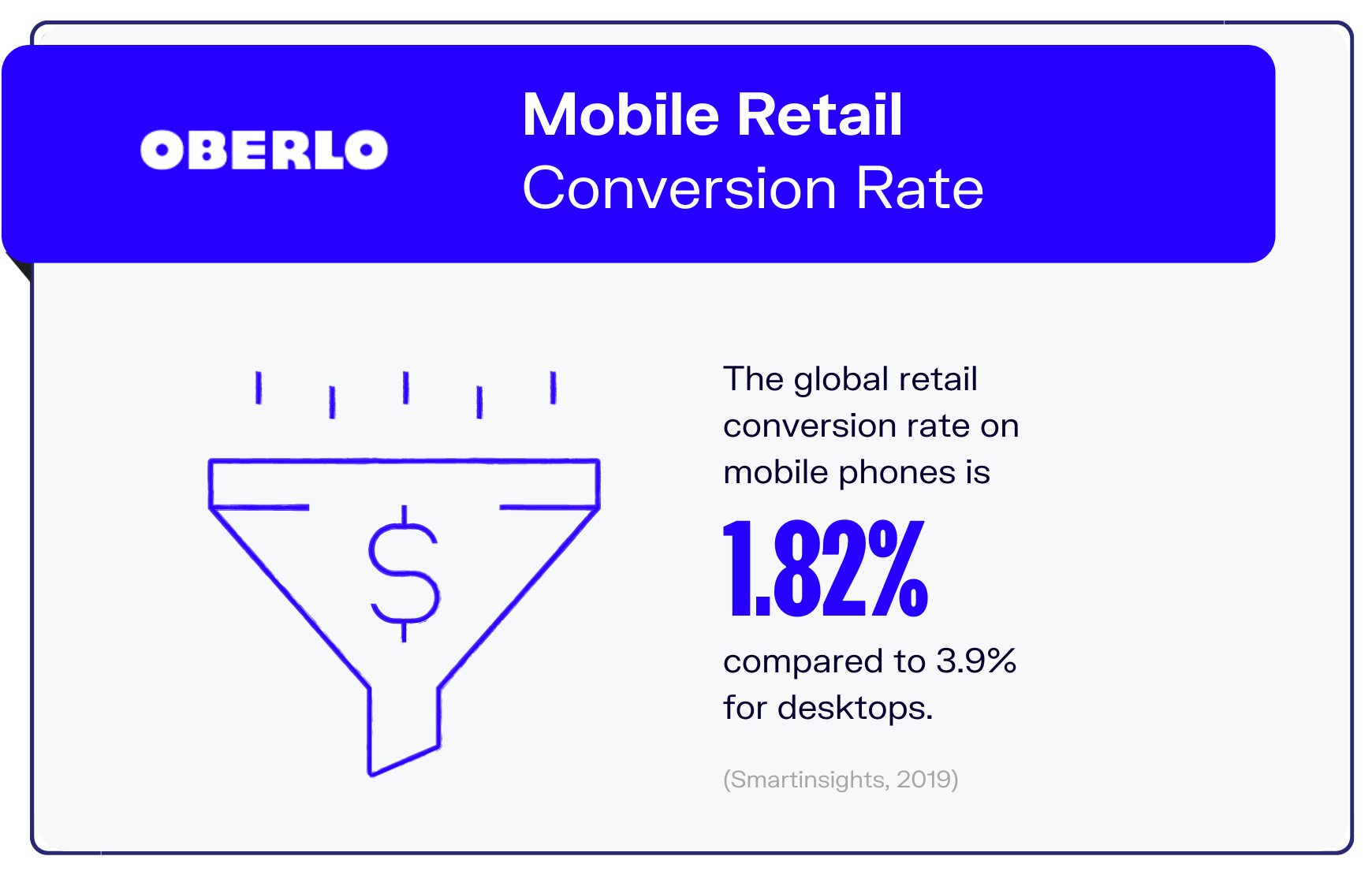
Despite the popularity of mobile shopping, the ecommerce conversion rate of mobile devices continues to lag behind that of desktops.
According to the latest mobile statistics, the global retail conversion rate for mobile phones is 1.82 percent (Smartinsights, 2019). It’s significantly higher for tablets, at 3.49 percent, but still shy of desktops’ conversion rate of 3.90 percent.
A similar distribution is seen among consumers in the US, with conversion rates for mobile phones and tablets at 1.53 percent and 3.36 percent respectively, while that of desktops stands at 4.14 percent.
This goes to show that while consumers enjoy browsing and carrying out product research on their mobile devices, desktops are still the preferred device for transactions.
So as you work to improve your online store’s conversion rate, use these benchmark figures to help you gauge how well your store is performing.
10. Voice Search on Mobile
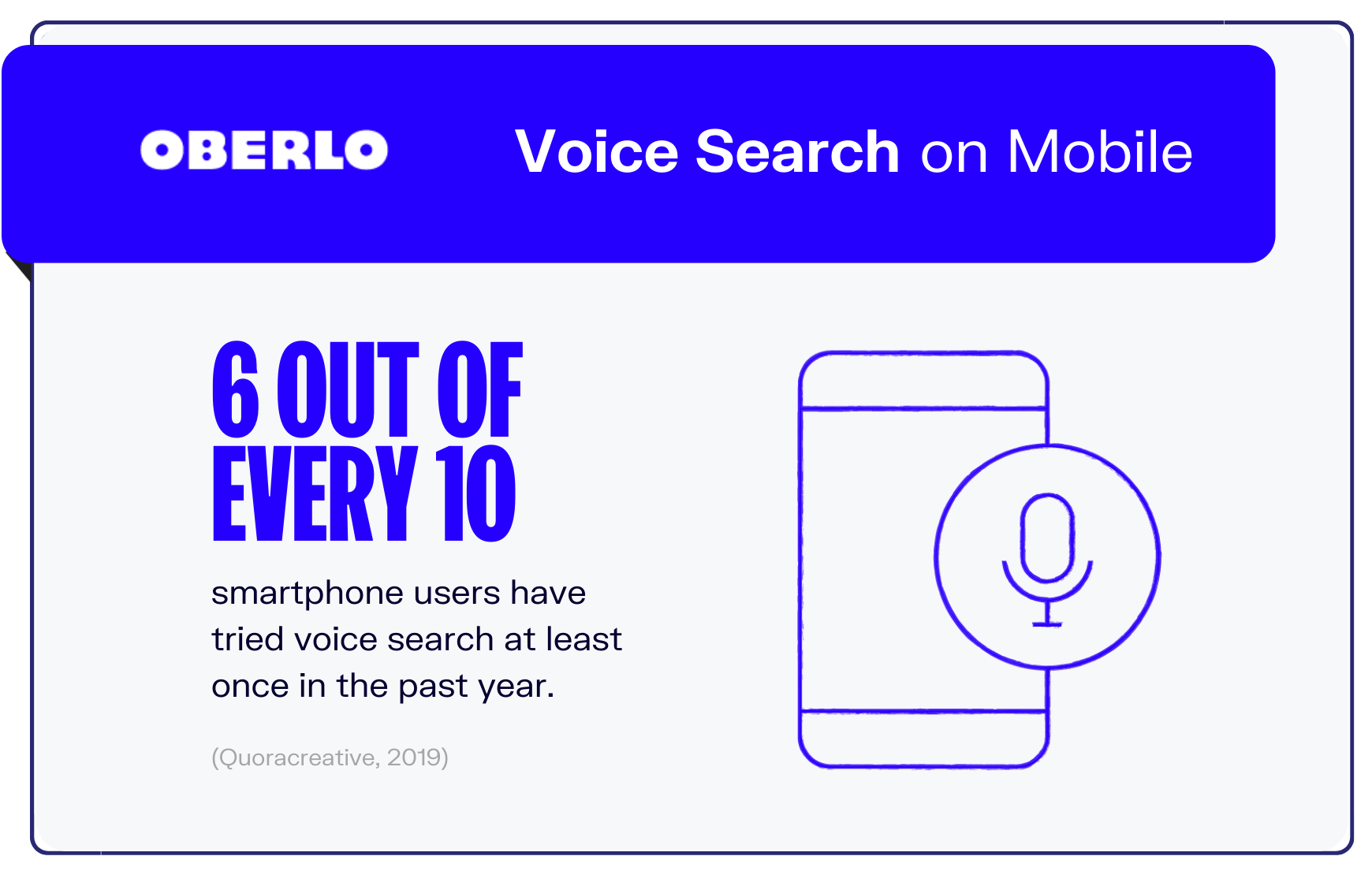
One aspect you should not miss out on when optimizing your ecommerce store for mobile is the potential of voice search.
Aside from the fact that, already, more than a quarter of the online population is using their mobile devices’ voice search feature, its usage looks to be increasing. As many as 60 percent of smartphone users claim to have tried voice search at least once in the past 12 months (Quoracreative, 2019).
Though it’s more popular among the younger crowd, with over half of all teenagers using voice search every day, you may be surprised to know that around nine percent of those aged between 55 and 64 also do so.
So aside from optimizing your dropshipping store for mobile, don’t forget to optimize for voice search queries as well. That means keeping your copy to the point and targeting question keywords such as who, what, where, when, why, and how.
Conclusion
From understanding the trend of mobile shopping and how digital ad spend has evolved, you now have a better idea of how consumers are engaging with their mobile devices and what the future holds.
These mobile usage statistics can help you craft a mobile-first strategy that will propel your dropshipping business forward by getting you higher engagement, traffic, and ultimately, sales. So go forth and use them to give your business an advantage now!

Summary: Mobile Usage Statistics
Here’s a summary of the Mobile Usage statistics you need to know in 2023:
- There are 6.8 billion smartphone users worldwide in 2023.
- US adults spend an average of 2 hours and 55 minutes on their smartphones every day.
- 69 percent of internet users prefer to look for reviews on their phones than approach an in-store employee.
- 50.9 percent of online shoppers worldwide shop on their mobile phones at least once a week.
- Six out of ten shoppers say the possibility to shop via mobile is an important factor in brand selection.
- Mobile web traffic accounts for 54.8 percent of global web traffic.
- 70 percent of the total digital media time in the US is spent on smartphones.
- More than two-thirds of the total digital ad spend in the United States in 2021 was on mobile ads.
- The global retail conversion rate on mobile phones is 1.82 percent, compared to 3.9 percent for desktops.
- Six out of every ten smartphone users have tried voice search at least once in the past year.



Want to Learn More?
- WooCommerce vs. Shopify: Which Is the Better?
- BigCommerce vs Shopify: Which One Is Better?
- How to Write a Business Plan: Step by Step Guide
- How to Start an Online Business: 10 Easy Steps
Is there anything else you’d like to know about mobile usage statistics and wish was included in this article? Let us know in the comments below!



